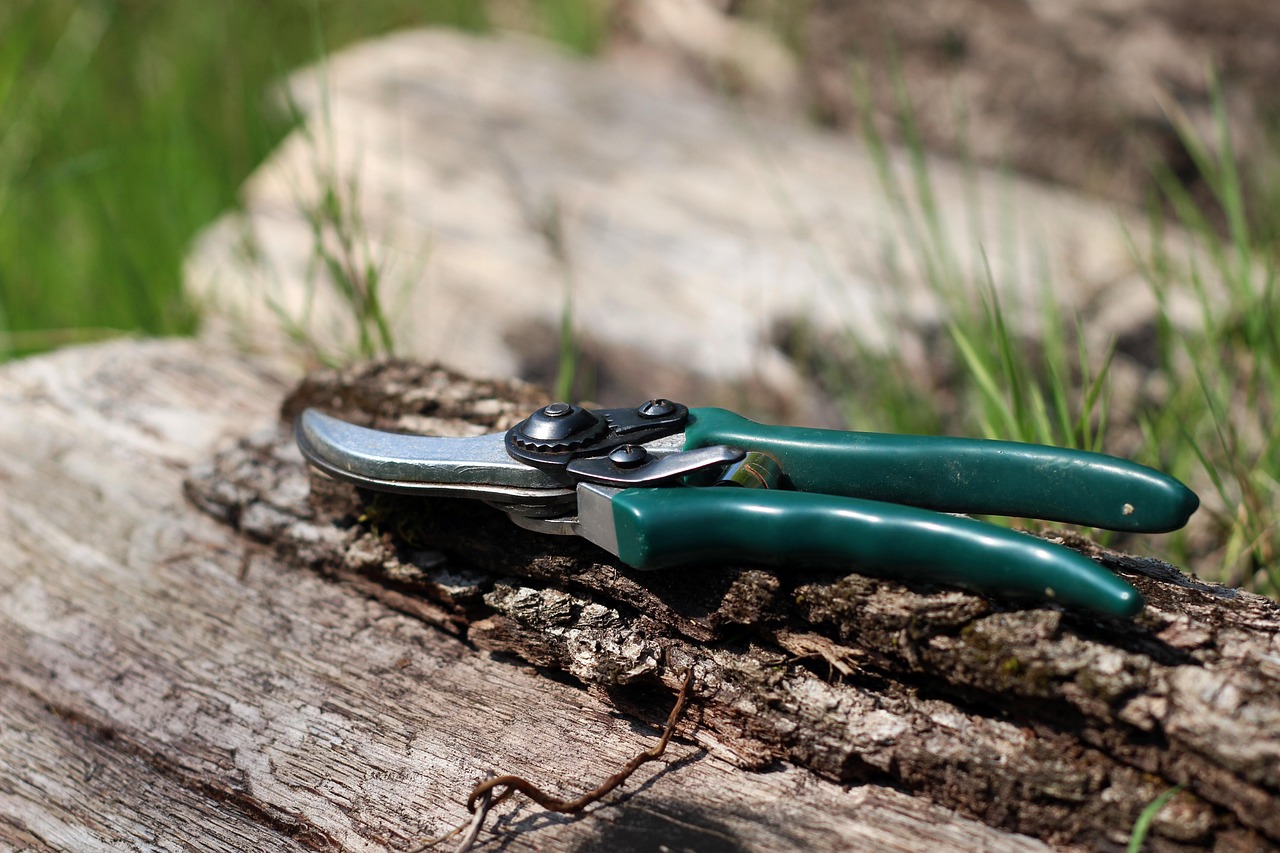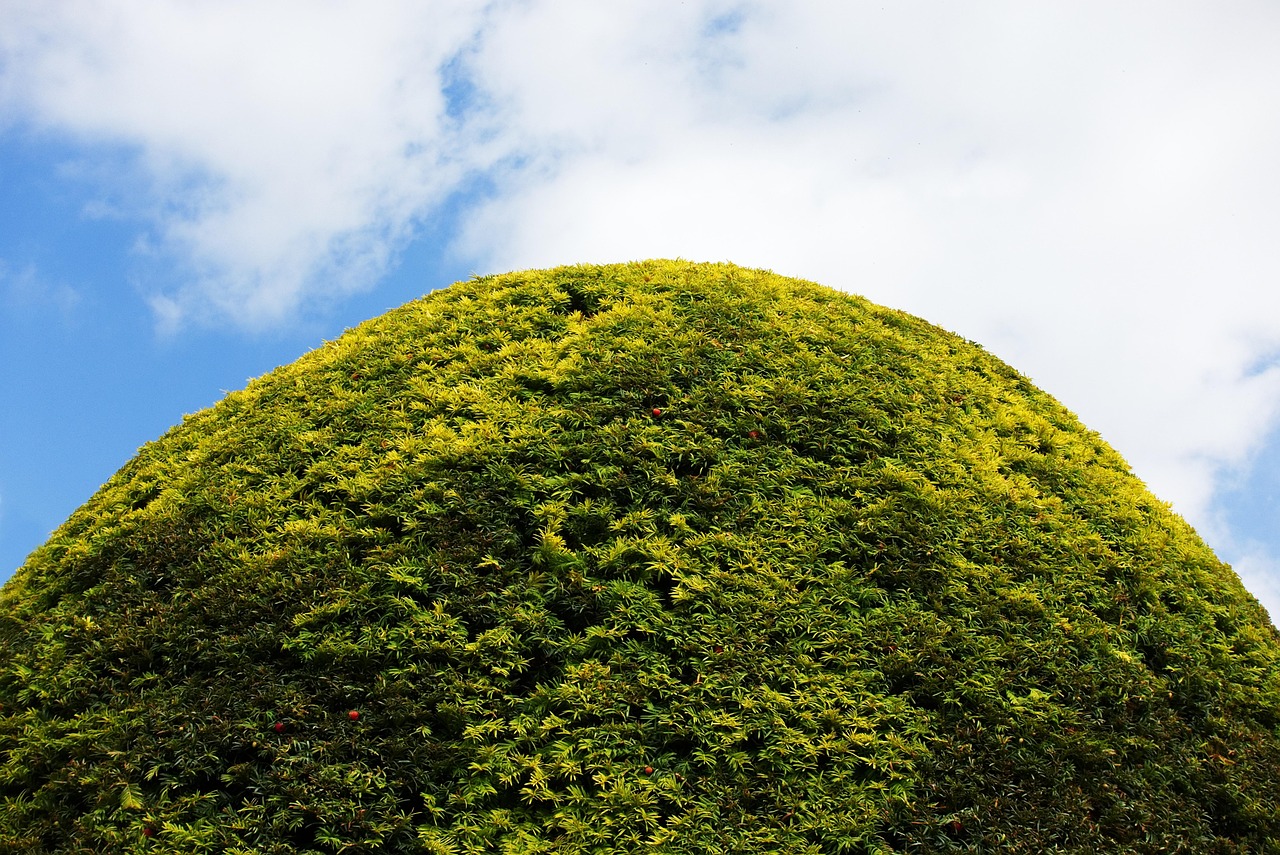Pruning topiary and shaped plants presents several challenges, including maintaining the desired shape and size, ensuring even growth, and preventing damage to the plant. Additionally, selecting the right tools and techniques is crucial, as improper pruning can lead to uneven cuts or stress on the plant. Seasonal timing and understanding plant growth patterns also play significant roles in successful pruning.
Pruning topiary and shaped plants presents several challenges, including maintaining the desired shape, preventing disease, and managing growth patterns. Proper techniques are essential to ensure these plants thrive while retaining their aesthetic appeal.
Topiary and shaped plants have been a part of garden design for centuries. They add elegance and structure to landscapes, offering unique visual interest. However, achieving the perfect shape requires skill and understanding of plant biology. Pruning is an essential part of this process, but it comes with its own set of challenges. Understanding these challenges can help gardeners achieve better results.

One of the primary challenges in pruning topiary is maintaining the intended shape over time. As plants grow, they naturally tend to stray from their trimmed forms. Regular maintenance is essential to keep them looking their best. This involves not only cutting back new growth but also understanding how different species respond to pruning.
Another significant challenge is managing the health of the plants. Improper pruning techniques can lead to weakened plants that are more susceptible to diseases. It is crucial to use sharp and clean tools to make precise cuts. This practice minimizes damage and reduces the risk of infection. Additionally, gardeners must be aware of the specific needs of each plant species when it comes to pruning.
Key Challenges in Pruning Topiary
When tackling the task of pruning topiary and shaped plants, several key challenges often arise:

- Timing: The timing of pruning is critical. Different species have specific growing seasons. Pruning at the wrong time can hinder growth or cause damage.
- Technique: Learning the correct technique is vital. Inappropriate cuts can lead to uneven growth or even kill the plant.
- Plant Health: Keeping plants healthy is a priority. Knowledge of diseases and pests that affect topiary plants is important for proper care.
- Tools: Using the right tools can make a significant difference. Dull or dirty tools can cause injury to the plant.
Each of these challenges requires careful consideration and planning. For example, timing affects not just the immediate appearance but also the long-term health of the plants. Pruning during a plant’s active growing period can stimulate new growth, while cutting during dormancy may result in stunted growth.
Proper technique is equally important. Gardeners must learn how to make cuts at the right angles and avoid cutting too much at once. This helps maintain the shape without stressing the plant. Additionally, understanding how different species react to pruning will inform decisions about when and how to prune effectively.
Understanding Plant Growth Patterns
To effectively prune topiary and shaped plants, gardeners must understand their growth patterns. This understanding helps in predicting how a plant will respond to pruning and when it needs attention. Here are some factors to consider:

- Growth Rate: Different species grow at different rates. Fast-growing species may require more frequent pruning.
- Branching Behavior: Some plants branch readily after being cut, while others may become sparse if cut too harshly.
- Seasonal Changes: Seasonal changes can influence growth patterns. Some plants may have a flush of growth in spring, necessitating timely pruning.
Understanding these factors can simplify the pruning process. It allows gardeners to create a schedule that aligns with the natural growth cycle of their plants. For instance, knowing that a particular species will grow rapidly in spring helps in planning pre-spring pruning sessions.
Environmental Considerations
The environment plays a crucial role in plant health and growth patterns. Factors such as soil quality, sunlight exposure, and moisture levels can significantly impact how a plant responds to pruning.
- Soil Quality: Healthy soil promotes strong root systems, which support vigorous growth. Poor soil can lead to weakened plants that struggle after pruning.
- Sunlight Exposure: Plants that receive adequate sunlight tend to grow more vigorously. Those in shady areas may become leggy and require different pruning techniques.
- Moisture Levels: Consistent moisture is necessary for healthy growth. Overly dry or waterlogged conditions can affect a plant’s ability to recover from pruning.
A thorough understanding of these environmental factors will enhance pruning efforts and overall plant health. Taking the time to assess these elements before beginning the pruning process can lead to better outcomes and healthier topiary plants.

In conclusion, while pruning topiary and shaped plants presents various challenges, understanding these difficulties can lead to more successful gardening experiences. By focusing on timing, technique, growth patterns, and environmental conditions, gardeners can enjoy beautiful and healthy topiary for years to come.
Tools and Techniques for Pruning Topiary
Choosing the right tools and employing effective techniques are critical aspects of successful topiary pruning. The tools used can greatly influence the precision of cuts and the overall health of the plants. Additionally, understanding various pruning techniques can help achieve the desired shapes while promoting healthy growth.
Essential Tools for Pruning
Investing in quality tools can make a significant difference in the pruning process. Here are some essential tools every gardener should consider:
- Bypass Pruners: Ideal for making clean cuts on small branches, allowing for quick and efficient pruning.
- Loppers: Useful for cutting thicker branches that pruners cannot handle, providing added leverage.
- Hedge Shears: Perfect for shaping and trimming hedges and topiary, offering larger cutting surfaces.
- Hand Saw: Necessary for removing larger branches that require more power than pruners or loppers can provide.
- Gardening Gloves: Protect hands from thorns or sharp edges, ensuring comfort while working.
Each tool has its purpose, and using them correctly can enhance the effectiveness of your pruning efforts. Keeping tools sharp and clean is equally important to prevent damage to the plants and reduce the risk of disease transmission.
Pruning Techniques
There are several techniques to consider when pruning topiary and shaped plants. Each technique serves a specific purpose and can impact growth patterns:
- Thinning: This involves removing some branches entirely to improve air circulation and light penetration. Thinning prevents overcrowding and allows for healthier growth.
- Heading Back: Cutting back stems to a bud or lateral branch promotes bushier growth. This technique is useful for maintaining a compact shape.
- Shearing: This technique involves cutting back foliage to create a uniform shape. It is commonly used for hedges and formal topiary designs.
- Pinching: This method entails removing the tips of young shoots to encourage branching. Pinching is especially effective for creating dense foliage.
Understanding when to apply each technique is essential. For example, heading back is best done during active growth periods, while thinning can be performed at any time if the plant is healthy.
Common Mistakes in Pruning Topiary
Even experienced gardeners can make mistakes when pruning topiary. Being aware of common pitfalls can help avoid disastrous results:
- Over-Pruning: Cutting too much foliage can stress the plant, leading to poor recovery or even death. Always prune conservatively, especially during the early stages.
- Ignoring Growth Patterns: Failing to consider how different plants respond to pruning can lead to uneven shapes. Knowledge of each species is crucial.
- Poor Timing: Pruning at the wrong time of year can hinder growth or encourage disease. Always research the best times for pruning specific plants.
- Neglecting Maintenance: Regular maintenance is key to preserving shape. Neglecting timely pruning can result in tangled and unsightly growth.
Avoiding these common mistakes requires diligence and attention to detail. Taking the time to assess each plant’s needs will yield better results in the long run.
The Role of Fertilization After Pruning
After pruning, fertilization plays a crucial role in helping plants recover and thrive. Providing the right nutrients can enhance growth and support the overall health of topiary plants.
| Nutrient Type | Importance |
|---|---|
| Nitrogen | Promotes leafy growth and overall vigor. |
| Phosphorus | Supports root development and flowering. |
| Potassium | Aids in overall plant health and disease resistance. |
| Micronutrients | Enhances various physiological processes within the plant. |
Selecting a balanced fertilizer that contains all three primary nutrients—nitrogen, phosphorus, and potassium—will provide ample support for recovery after pruning. Additionally, applying organic fertilizers can improve soil quality over time, further benefiting the plants.
Watering Practices Post-Pruning
Watering practices are equally important after pruning. Proper hydration supports recovery and encourages new growth. Here are some tips for effective watering post-pruning:
- Adequate Watering: Ensure plants receive enough water without being overwatered. A deep watering once a week is often sufficient.
- Avoid Water Stress: Monitor soil moisture levels. Plants stressed from lack of water may struggle to recover from pruning.
- Mulching: Applying mulch around the base of plants helps retain moisture and regulate soil temperature.
Implementing these watering practices will contribute significantly to a successful recovery period after pruning, leading to healthier topiary plants in the long run.
Pest and Disease Management in Topiary
Managing pests and diseases is an essential aspect of maintaining healthy topiary plants. Pruning can sometimes expose plants to potential threats, making it crucial to be vigilant after the process. Understanding common pests and diseases that affect topiary will help gardeners take proactive measures to protect their plants.
Common Pests Affecting Topiary
Several pests are known to threaten the health of topiary plants. Identifying these pests early is key to effective management:
- Aphids: These small, soft-bodied insects feed on plant sap, leading to stunted growth and distorted leaves. They can also transmit viruses.
- Spider Mites: These tiny arachnids thrive in dry conditions and can cause significant damage by sucking plant juices. Look for fine webbing on leaves.
- Scale Insects: These pests appear as small, hard bumps on stems and leaves. They can weaken plants by feeding on sap.
- Whiteflies: Similar to aphids, these insects feed on sap and can cause leaf yellowing. They also excrete a sticky substance known as honeydew.
Regular inspections of plants can help detect these pests before they escalate into larger infestations. Early intervention is critical to maintaining plant health.
Disease Prevention Strategies
In addition to pests, various diseases can affect topiary plants. Implementing preventive measures is vital for keeping plants healthy:
- Fungal Diseases: Fungal infections such as powdery mildew and root rot can develop in poorly drained soils or overly humid conditions. Good air circulation and proper watering techniques can help prevent these issues.
- Bacterial Diseases: Bacterial infections often manifest as leaf spots or wilting. Using clean tools when pruning can help minimize the spread of bacteria.
- Viral Diseases: Viral infections can cause discoloration and deformities. It is crucial to control aphid populations, as they are common vectors for viral transmission.
Regular monitoring and timely action are essential in preventing these diseases from taking hold. Maintaining a healthy environment for your plants will significantly reduce the likelihood of disease outbreaks.
Seasonal Considerations for Pruning Topiary
The seasons play a significant role in the timing and technique of pruning topiary and shaped plants. Each season presents unique challenges and opportunities for gardeners to consider:
Spring Pruning
Spring is often considered the best time for pruning many topiary plants. As new growth begins, having a well-timed pruning session can enhance overall plant health. Here are some key points to consider:
- Timing: Aim to prune just before the active growing season begins. This encourages healthy new growth.
- Shape Maintenance: Spring pruning helps maintain shapes that may have become overgrown during the winter months.
- Pest Inspection: Spring is also a good time to inspect for any signs of pests or diseases that may have developed during the dormant period.
Summer Pruning
Summer pruning can be beneficial for certain types of topiary, especially those that grow vigorously. However, care must be taken to avoid cutting too late in the season:
- Control Growth: Light trimming in summer can help control excessive growth and maintain desired shapes.
- Avoid Stress: Ensure that plants are adequately watered during hot summer months, as pruning can stress them further.
- Pest Management: Summer is an active time for pests, so continued monitoring is essential.
Fall and Winter Pruning
Fall and winter present unique challenges for pruning topiary plants. While it is often advisable to avoid heavy pruning during these seasons, some strategies can be beneficial:
- Minimal Pruning: Light pruning in late fall can help shape plants while minimizing stress before dormancy.
- Preparing for Winter: Remove any dead or diseased branches before winter to prevent potential issues during cold months.
- Caution with Timing: Avoid pruning too late in winter, as new growth may be stimulated, making plants vulnerable to frost damage.
The Impact of Environmental Stressors
Environmental stressors such as extreme temperatures, drought, and heavy rainfall can significantly affect the overall health of topiary plants. Understanding how these factors impact pruning practices is essential for success:
Drought Stress
Drought can weaken plants, making them more vulnerable to damage during pruning. Here are some considerations:
- Watering Prior to Pruning: Ensure adequate hydration before undertaking any pruning tasks. Well-hydrated plants recover better post-pruning.
- Avoid Heavy Pruning: During drought conditions, limit pruning to essential maintenance only to reduce stress on the plant.
Temperature Extremes
Both high heat and freezing temperatures can impact plant health and pruning outcomes:
- Heat Stress: High temperatures can cause rapid water loss. Schedule pruning during cooler parts of the day to minimize stress.
- Frost Damage: Avoid late winter pruning that may stimulate new growth vulnerable to frost damage.
By being mindful of these environmental stressors, gardeners can adapt their pruning practices accordingly, ensuring healthier topiary and shaped plants throughout the year.
Additional Considerations for Successful Pruning
In addition to the factors already discussed, several other considerations can enhance the success of pruning topiary and shaped plants. These include the importance of plant selection, ongoing education, and community engagement in gardening practices.
Choosing the Right Plant Species
Not all plants are suitable for topiary or shaping. Selecting the right species is critical for both ease of maintenance and aesthetic appeal. Here are some tips for choosing suitable plants:
- Growth Habit: Look for species that naturally grow in a way conducive to shaping. Plants with dense foliage and strong branching structures are ideal.
- Hardiness Zone: Choose plants that thrive in your local climate. Understanding your hardiness zone will help ensure that the selected species can withstand local weather conditions.
- Maintenance Needs: Consider the long-term care requirements of each species. Some plants may require more frequent pruning than others, which can affect your overall gardening schedule.
By selecting the right plants, gardeners can minimize many of the challenges associated with pruning and shaping. This thoughtful approach will lead to more successful outcomes and a more enjoyable gardening experience.
Ongoing Education and Skill Development
Gardening is a continually evolving field, and staying informed about best practices is essential for success. Here are some ways to enhance your knowledge:
- Workshops and Classes: Many local garden centers and botanical gardens offer workshops on pruning techniques and plant care. Participating in these can significantly enhance your skills.
- Online Resources: There are numerous online resources, including videos and articles, that provide valuable information on pruning techniques, pest management, and plant care.
- Networking with Other Gardeners: Engaging with local gardening clubs or online forums allows you to share experiences and learn from others’ successes and challenges.
Investing time in education not only improves your gardening skills but also builds confidence when tackling pruning tasks.
Community Engagement
Gardening can be a communal activity that fosters connections within neighborhoods. Community gardens and cooperative gardening efforts can provide valuable experiences:
- Shared Knowledge: Collaborating with others allows for the exchange of tips and techniques, enhancing everyone’s skills.
- Collective Maintenance: Working as a team can make handling larger topiary gardens easier and more enjoyable.
- Environmental Awareness: Community gardens often promote sustainable practices, helping to educate participants on eco-friendly gardening.
Engaging with your community not only enriches your gardening experience but also contributes to the overall beautification of shared spaces.
Conclusion
Pruning topiary and shaped plants involves various challenges that require careful consideration and planning. From selecting the right tools to understanding plant biology and environmental factors, each aspect plays a crucial role in successful pruning practices. Awareness of common pests, diseases, and seasonal considerations further enhances the ability to maintain healthy plants.
The importance of education cannot be overstated. By continually learning about best practices, participating in community efforts, and networking with fellow gardeners, individuals can improve their skills and enjoy more fruitful gardening experiences. Ultimately, taking a holistic approach to pruning will lead to beautiful, thriving topiary that adds elegance and structure to any landscape.
As gardeners navigate the complexities of pruning topiary, they will find that patience, knowledge, and community support are vital elements in overcoming challenges. Embracing these aspects will not only result in healthier plants but also foster a deeper appreciation for the art of gardening itself.
